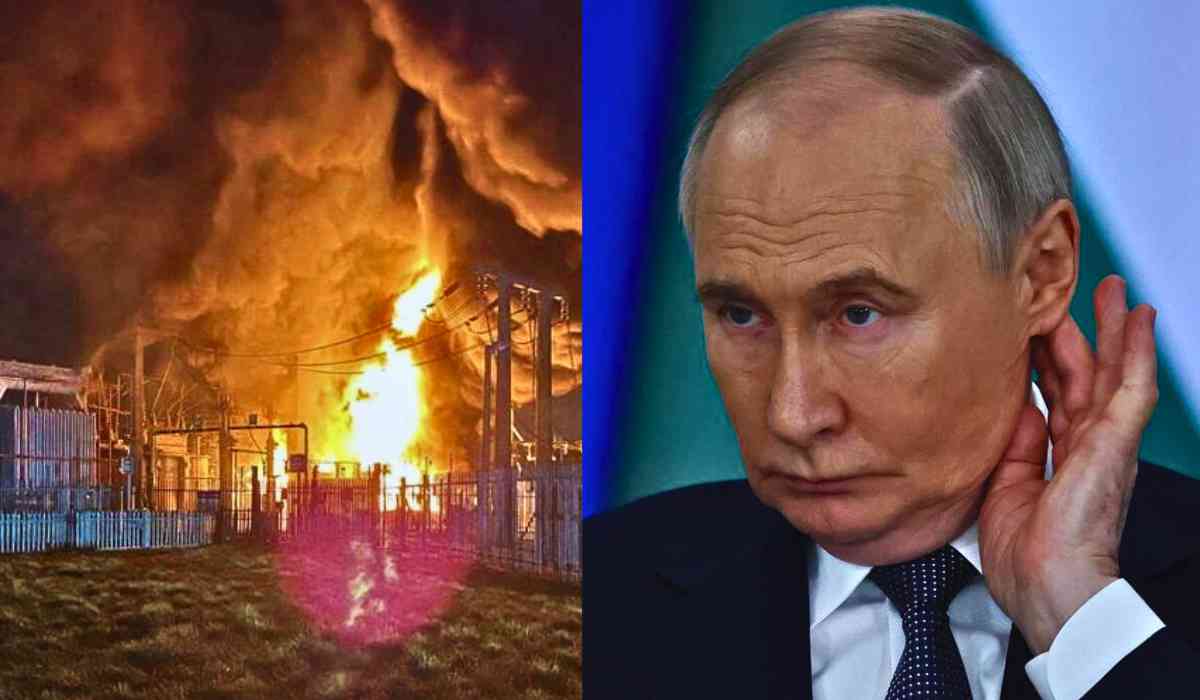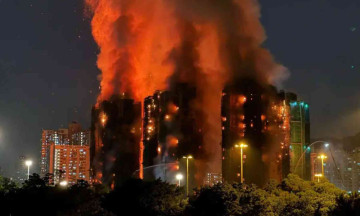On March 21, 2025, London’s Heathrow Airport, one of the world’s busiest travel hubs, faced an unprecedented shutdown due to a massive power outage caused by a fire at a nearby electrical substation. The incident disrupted global travel, impacted over 200,000 passengers, and left thousands of homes and businesses in the surrounding areas without electricity. As operations resumed days later, questions about the cause of the outage have fueled conspiracy theories, including allegations of Russian sabotage.

The Incident: A Fire That Paralyzed Heathrow
The fire broke out late on March 20 at an electrical substation in Hayes, West London, approximately 1.5 miles from Heathrow. The blaze caused a significant power outage that affected not only the airport but also around 16,000 homes and businesses in the vicinity. The London Fire Brigade (LFB) quickly deployed ten fire engines and about 70 firefighters to combat the flames. Around 150 people were evacuated from nearby buildings as a precautionary measure, while residents were advised to keep windows and doors closed due to heavy smoke.
The fire led to Heathrow’s complete closure for nearly 24 hours. Over 1,300 flights were canceled or redirected, leaving terminals dark and empty while planes remained grounded on the tarmac. The airport’s website also went offline during the disruption, further complicating communication with passengers.
Immediate Response: Safety First
Authorities acted swiftly to ensure public safety. A 200-meter cordon was established around the substation, and emergency responders worked throughout the night to contain the fire. Scottish and Southern Electricity Networks initially estimated that power would be restored by early morning on March 21; however, the scale of damage delayed recovery efforts.
Heathrow’s chief executive, Thomas Woldbye, revealed that both the main power supply and a backup transformer failed during the incident. This necessitated shutting down systems in accordance with safety protocols while engineers worked to reroute electricity from two remaining substations.
)
Global Impact: Disruption Beyond Borders
The closure of Heathrow had far-reaching consequences for global travel. As Europe’s busiest airport for international flights—handling over 83 million passengers annually—the disruption affected not only travelers but also cargo shipments and business operations reliant on timely air transport. Incoming flights were diverted to other airports like Gatwick, which scrambled to accommodate additional traffic.
Flight tracking services reported over 8,000 flight delays or cancellations worldwide on March 21 alone. Airlines like British Airways (BA) faced significant operational challenges as they worked to rebook passengers and manage logistics.
Conspiracy Theories: Russian Sabotage or Pure Accident?
While authorities have stated there is no evidence of foul play, conspiracy theories have gained traction online. Some commentators speculated that Russia might be behind the incident as part of a broader strategy of hybrid warfare targeting Western infrastructure. This theory aligns with recent reports of increased Russian sabotage activities across Europe amid rising tensions over the Ukraine conflict.
British tabloids amplified these suspicions with provocative headlines questioning whether President Vladimir Putin could be involved. Even Russian officials appeared to mock such claims; Dmitry Medvedev sarcastically remarked on social media about Britain’s tendency to blame Russia for crises.
However, experts have urged caution against jumping to conclusions. Matthew Savill from the Royal United Services Institute (RUSI) noted that attributing every infrastructure failure to foreign interference risks creating unnecessary paranoia. Energy Secretary Ed Miliband described the situation as “unprecedented” but emphasized that investigations into the cause of the fire are ongoing.

Infrastructure Resilience: A Wake-Up Call
The incident has highlighted vulnerabilities in critical infrastructure systems. Despite being equipped with backup generators, Heathrow was unable to maintain operations due to simultaneous failures in both primary and secondary power supplies. This raises questions about the resilience of essential facilities like airports during emergencies.
Energy Secretary Ed Miliband has ordered an urgent investigation into the outage under the Energy Act. Meanwhile, Heathrow has launched an internal review of its crisis management plans led by former Transport Secretary Ruth Kelly. These efforts aim to identify gaps in preparedness and implement measures to prevent similar incidents in the future.
Passenger Experience: Stranded Amid Chaos
For passengers, the experience was nothing short of nightmarish. Photos from inside Heathrow showed dark terminals with empty check-in counters and blank departure screens. Travelers were stranded for hours as airlines scrambled to provide updates and alternative arrangements.
Many passengers expressed frustration over inadequate communication from airport authorities during the crisis. Some criticized Heathrow for failing to anticipate such a scenario despite its status as a major international hub.

Recovery Efforts: Gradual Return to Normalcy
By March 23, operations at Heathrow had largely returned to normal. British Airways reported running nearly 90% of its scheduled flights over the weekend as restrictions on overnight flights were temporarily lifted to clear backlogs. However, it may take weeks for airlines and passengers alike to fully recover from the disruption.
Heathrow has since pledged to improve its contingency planning and invest in more robust infrastructure systems capable of withstanding unexpected events like power outages.
Lessons Learned Amid Speculation
The Heathrow Airport power outage serves as a stark reminder of how interconnected systems can amplify local incidents into global crises. While conspiracy theories about Russian sabotage remain unsubstantiated, they reflect broader concerns about geopolitical tensions and cybersecurity threats.
As investigations continue, it is crucial for authorities to focus on strengthening infrastructure resilience while maintaining transparency with the public. For now, Heathrow’s recovery offers hope that even in moments of chaos, swift action and collaboration can restore order.
This incident underscores not only the fragility of modern infrastructure but also society’s reliance on accurate information during emergencies—a lesson that will resonate long after normalcy returns to one of Europe’s busiest gateways.
With inputs from agencies
Image Source: Multiple agencies
© Copyright 2025. All Rights Reserved Powered by Vygr Media.


























